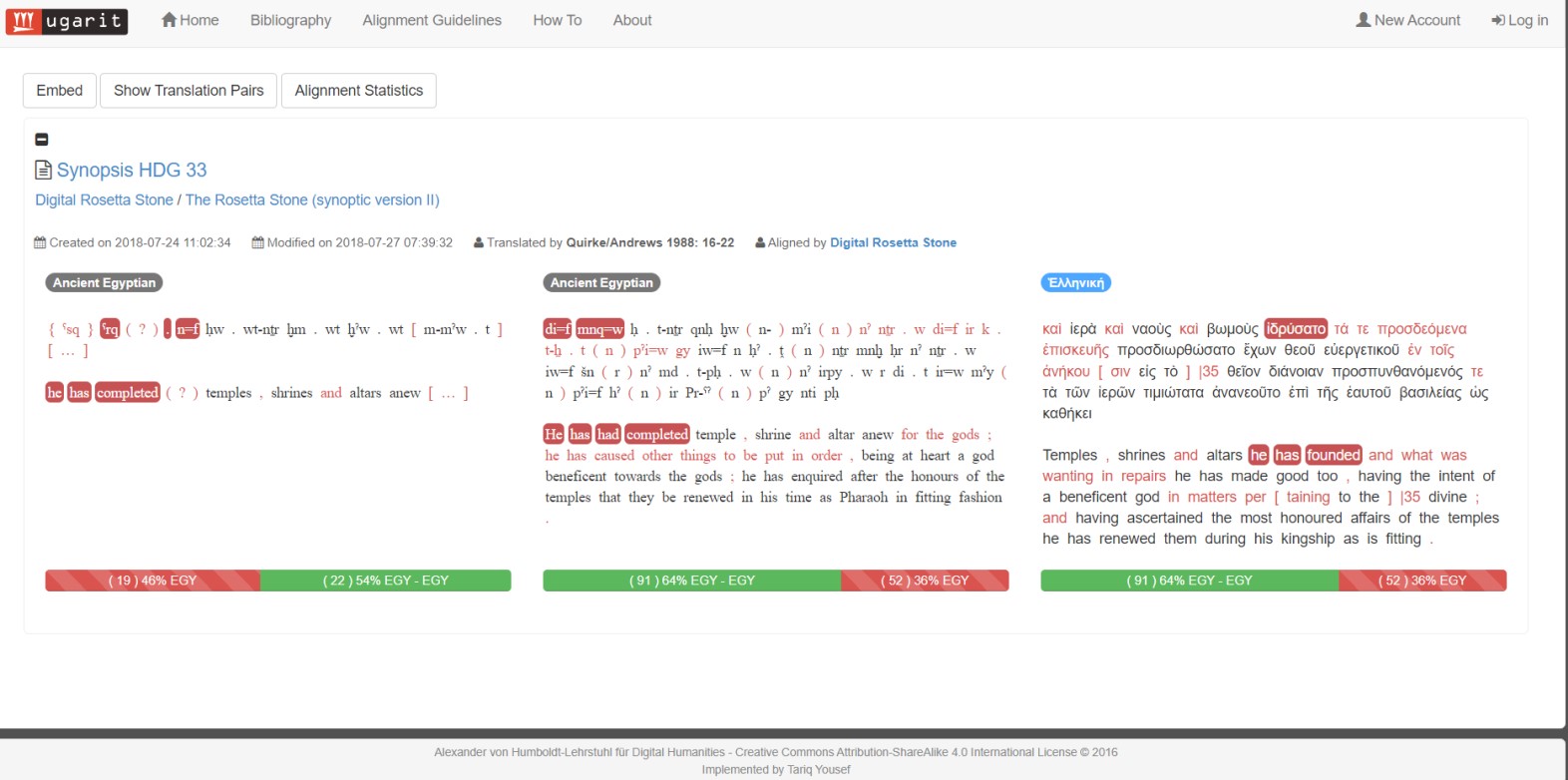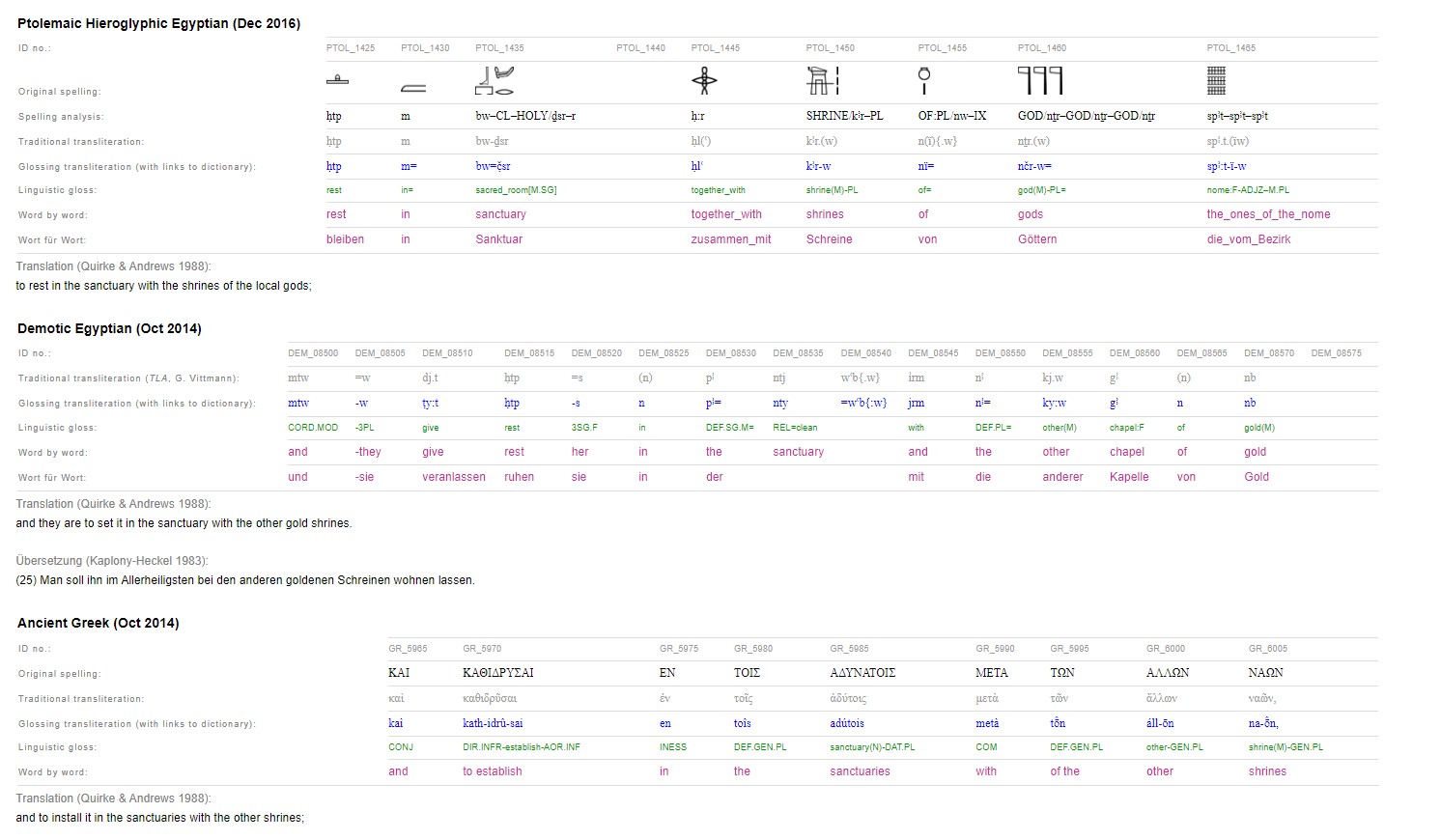Rosetta Stone
There are objects that immediately come to mind when you think of Ancient Egypt: the pyramids or the mask of Tutankhamun. The Rosetta Stone is one of those objects. It is not the artistic quality of the Rosetta Stone that has given it such an important role in cultural memory. No, it is the history of science! The Rosetta Stone contains a text in three different versions: hieroglyphic, demotic, and Greek. The Rosetta Stone was the key to Champollion’s deciphering of the hieroglyphs.
But this blog is not about the Rosetta Stone itself. No! We want to briefly mention the projects that deal with the Rosetta Stone and tell you what ORAEC has to do with it. Have fun!
The Digital Rosetta Stone Project
The Leipzig based project has published a depth map of the Rosetta Stone and licensed it under cc-by-sa-nc 4.0: http://dx.doi.org/10.17613/t1e2-0w02. There is also a visual alignment. When you move your mouse over a passage, you automatically see the corresponding sentences in the other language versions. Awesome! The mouseover shows the transliteration of the hieroglyphs, demotic and Greek. But be careful: the correct ꜣ, ꜥ and ꞽ are not used. If you click on a sentence, you will be taken to an excellent alignment: Ugarit. Here is an example from Rosetta Stone:

The elements that belong together are highlighted in color: the “ꜥrq.n=f” of the hieroglyphic text corresponds to the “he has completed” of the English translation, but also to the “dꞽ=f mnq=w” of the Demotic and the “ἱδρύσατο” of the Greek. This is a great thing, isn’t it? You can find the full synoptic text here: https://ugarit.ialigner.com/userProfile.php?userid=74&tgid=411
The project also announces to create a treebank. Let’s keep our fingers crossed!
The Rosetta Stone Online project
This project is very similar to the one just mentioned. It also has a visual alignment. You can also see which passages belong together! Great! There is no mouseover. Clicking on a passage takes you to a detailed linguistic annotation:

There is - and this is the added value compared to the other project - a linguistic glossing, a link to the good old TLA and the reproduction of the hieroglyphs as image files. However, unlike the first project, the different language versions of the text are not correlated. Furthermore, the word-for-word annotation sometimes leads to problems if the structure of the languages is different. In our example, this is the case with the Demotic sentence. The relative pronoun ntj is translated as “sanctuary”. The advantages of the first project are therefore in the cross-word annotation, while the linguistic annotation in the second project is more detailed.
Transcription de la Pierre de Rosette en Latex (avec hiéroglyphes caractères Unicode)
This month, Denise Vella-Chemla published a website that reproduces the hieroglyphic text in latex. This is the first time that the hieroglyphs of the Rosetta Stone are available as characters. In addition, the individual lines are reproduced as PDF files, e.g. http://denise.vella.chemla.free.fr/variable1basvershaut.pdf. That’s great progress, right? Thankfully, Denise Vella-Chemla has allowed us to use her Unicode hieroglyphs in our metasearch engine. The hit list there leads to her website.
Have fun studying the Rosetta Stone, searching for hieroglyphic spellings, and happy Pentecost!
This work is marked with CC0 1.0 Universal